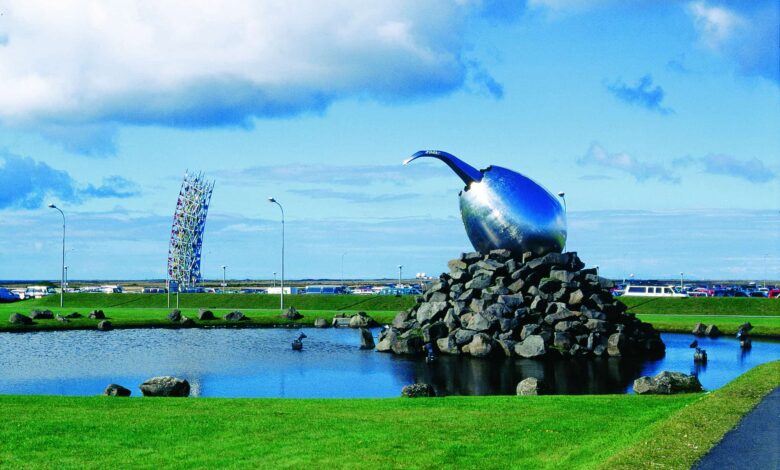Understanding Antarvafn: A Deep Dive into Icelandic Culture and History

Antarvafn, a term deeply rooted in Icelandic traditions, holds cultural significance that extends far beyond its literal meaning. This ancient concept has shaped various aspects of Icelandic folklore, customs, and even modern-day life. Whether you’re curious about its historical implications or its current role, understanding Antarvafn provides insight into the enduring strength of Icelandic heritage. This article will explore the origins, uses, and meaning of Antarvafn, offering readers a comprehensive view of its impact on Icelandic culture.
What is Antarvafn?
The term “Antarvafn” is a combination of two Icelandic words, “antar,” meaning “against,” and “vafn,” meaning “cloth” or “covering.” It refers to a specific form of traditional Icelandic fabric, often used in a variety of garments, particularly during festive occasions and historical events. Historically, Antarvafn was woven with intricate patterns, designed not only for its practicality but also to represent the wearer’s status or position within the society. The cloth, characterized by its durability and artistic patterns, was integral to Icelandic daily life.
The Historical Origins of Antarvafn
Antarvafn traces its roots back to the Viking Age, where weaving played a crucial role in everyday life. Icelandic women, in particular, became skilled in the art of weaving, producing garments and tapestries that were not only functional but also visually striking. In this era, fabric served as a means of self-expression, with colors, patterns, and types of cloth signifying social status, wealth, and even regional identity.
The historical significance of Antarvafn can be seen in its use during important societal events, such as weddings, feasts, and religious ceremonies. The intricacy of the cloth and the patterns woven into it were often a symbol of respect and reverence for the occasion. The use of specific colors and designs was believed to carry symbolic meaning, offering protection, good fortune, or blessings.
Cultural Significance of Antarvafn in Icelandic Folklore
In Icelandic folklore, Antarvafn is more than just a fabric; it is seen as a symbolic object imbued with magical properties. Folk stories often depict Antarvafn as a protective covering, shielding the wearer from harm or misfortune. This belief highlights the deep connection between the physical and spiritual realms in Icelandic culture. The cloth was sometimes considered a magical talisman, woven with spells or charms, designed to ward off evil spirits or bring good luck.
Antarvafn also played a role in the storytelling traditions of Iceland. The fabrics and their patterns were often associated with mythological figures or gods, each representing different aspects of Icelandic life, from protection to fertility. This connection to mythology and storytelling has kept the tradition of Antarvafn alive in modern Icelandic culture, where it is still respected as a symbol of cultural pride and continuity.
The Weaving Process: Craftsmanship Behind Antarvafn
Weaving Antarvafn is an intricate and skillful process that requires both artistry and knowledge. Traditionally, the weaving was done on hand looms, passed down through generations. The process itself was labor-intensive, with each step requiring a careful balance of technique and creativity. The weaver would begin by selecting the right fibers, usually wool, and then prepare the loom. The fibers would be dyed using natural materials, often sourced from local plants or minerals.
Once the materials were ready, the weaver would begin the slow process of weaving the fabric, ensuring that each thread was positioned correctly to create the desired pattern. The design could range from simple geometric shapes to more elaborate, symbolic motifs. The beauty of Antarvafn lies not only in its visual appeal but also in the knowledge and skills required to craft it.
Antarvafn in Modern Iceland: Tradition Meets Contemporary Fashion
In contemporary Iceland, the significance of Antarvafn has not been forgotten. While traditional weaving methods are still practiced, the fabric has found its place in modern Icelandic fashion and art. Designers and artisans have drawn inspiration from the ancient patterns and techniques, incorporating them into contemporary clothing, accessories, and home decor items. The resurgence of interest in traditional Icelandic textiles, including Antarvafn, has been part of a broader movement to preserve and celebrate Icelandic heritage.
In fashion, Antarvafn-inspired designs have been used to create unique garments that blend old and new styles. For example, modern Icelandic designers have produced outerwear, scarves, and hats that feature elements of Antarvafn’s traditional patterns. These designs pay homage to the past while making the fabric relevant to today’s aesthetic tastes. The use of Antarvafn in contemporary fashion also highlights the growing trend of sustainability, as many Icelandic designers focus on using natural materials and eco-friendly production methods.
Antarvafn and Icelandic Identity
Antarvafn is more than just a fabric or a tradition—it is a symbol of Icelandic identity. The craftsmanship involved in creating the cloth represents a deep connection to the land and its people. Icelandic culture places a strong emphasis on self-reliance, resourcefulness, and respect for nature, values that are reflected in the production of Antarvafn.
As Icelandic society has evolved, the fabric has remained a constant reminder of the nation’s history and values. Even as modern technology has changed the way textiles are produced, the tradition of weaving and the symbolism behind Antarvafn have continued to play a role in shaping Icelandic cultural consciousness. It serves as a bridge between the past and the present, reminding Icelanders of their heritage while contributing to their sense of belonging in the contemporary world.
Why Antarvafn Matters Today
In today’s world, where fast fashion and mass production dominate, Antarvafn serves as a reminder of the value of craftsmanship, tradition, and cultural preservation. The fabric is a testament to the skills and knowledge passed down through generations, and it carries with it a story of resilience and connection to the land. In an era of globalized culture, Antarvafn offers a unique perspective on the importance of maintaining cultural roots and honoring traditions.
Moreover, Antarvafn’s resurgence in contemporary fashion and design illustrates how old traditions can evolve and remain relevant in modern society. The use of traditional techniques, along with the incorporation of modern sensibilities, allows Antarvafn to thrive in the current cultural landscape. It provides both Icelandic people and outsiders with a tangible connection to the country’s rich heritage and timeless craftsmanship.
Conclusion: Preserving the Legacy of Antarvafn
Antarvafn is a symbol of Icelandic culture that has stood the test of time. From its origins in the Viking Age to its place in modern-day fashion and society, Antarvafn embodies the resilience, creativity, and pride of the Icelandic people. It serves as a reminder of the importance of preserving cultural traditions while adapting them to the present. As we continue to look toward the future, the legacy of Antarvafn will undoubtedly remain an integral part of Icelandic identity, offering a glimpse into the past and a connection to the enduring spirit of the nation.



